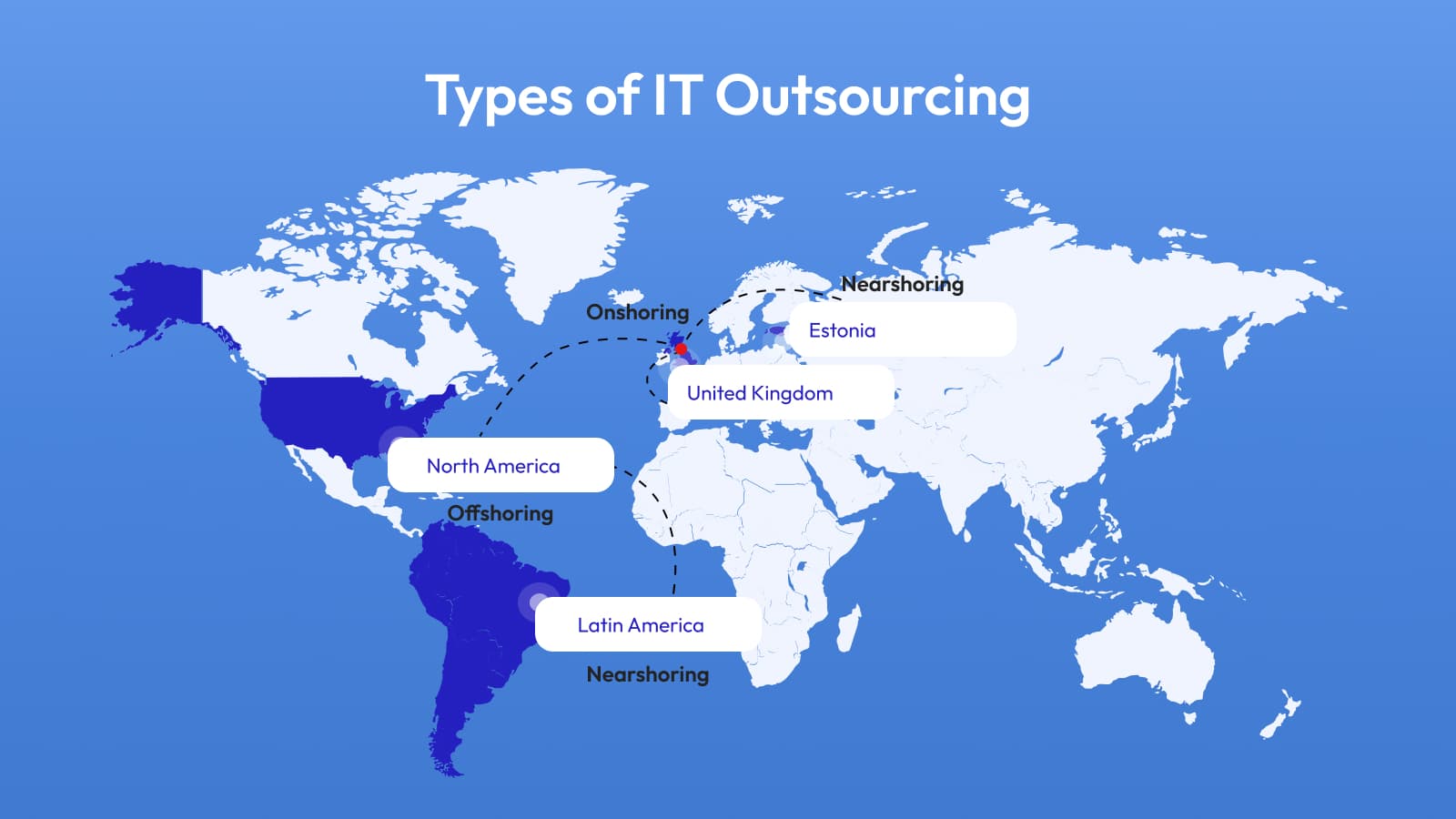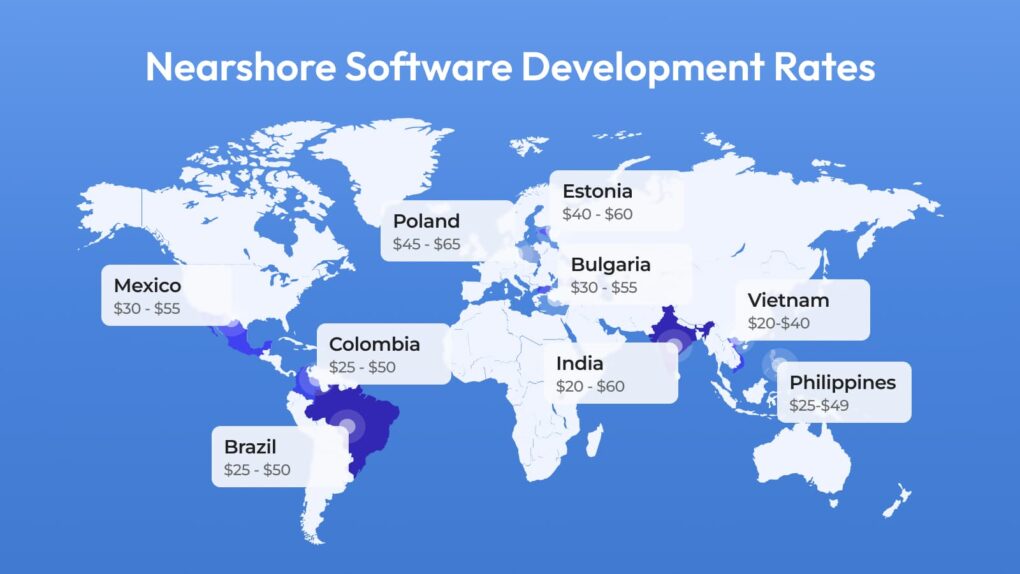
What Is Nearshore Software Development: Strengths and Weaknesses
In the global society of dynamic technologies, organizations are in a constant search for new effective strategies of working. A classic model that can be mentioned is the nearshore software development that is known to achieve a proper balance of all the core interests in cost, quality, and communication. This paper seeks to discuss what nearshore software development is and the advantages as well as limitations of the approach.
Nearshore software development is a model or approach of outsourcing software development where the work is performed by a vendor that is geographically close to the home country.
Nearshoring is one of the outsourcing models and is characterized by the launching of software development processes by a company to an adjoining country or a country in a similar time zone. This is in contrast with onshore development which is where the work is done at the same country as the company, and offshore development, which is an outsourcing practice in which tasks are handled by other countries that have huge time zone differences from the outsourcing firm.
Hence the nearshore model has been embraced because it has several advantages over other outsourcing modalities. This is a blend of the outsourcing advantage of cheap labor and the onshore advantage of communication and cultural compatibility.
Advantages of Nearshore Software Development
Time zone alignment
Being within the same region and more specifically having some twenty-four hours in synchronization can help existent business relations to grow and foster new opportunities.
First of all, one of the greatest benefits of nearshore software development is physical closeness. As they are located in neighboring countries or even in the same region, then time zone differences are minimal at most. This alignment makes it easier to work in a coordinated manner, cuts on the time taken to relay messages, and makes working hours to be in harmony. For instance, a company of the USA might collaborate with a development team in Mexico or Canada since both of the teams will be able to approach during the same time.
Cultural and language similarities
Nearshore outsourcing is commonly included regions that are culturally and linguistically related to the outsourcing nation. This cultural alignment reduces the risk of misunderstandings; enhances communication, and ensures that the development team has a better understanding of the client’s requirements and probable expectations. For instance, a U. S. company outsourcing to Latin America will realize a better implementation process because they share closely related cultures and probably the English language.
Cost efficiency
Though not as cheap as offshore outsourcing, nearshore development is considerably more affordable than onshore strategies. The less cost you incur on employees, the more you save without having to compromise the quality of the products you’re delivering to the market. This balance is particularly attractive for organizations that want to tightly constrain expenses but at the same time do not want to experience the issues that accompany offshore outsourcing, such as wide time zones and sometimes language barriers.
Additionally, opting for a dedicated development team services within a nearshore framework ensures that your project benefits from focused expertise and seamless collaboration, further enhancing the efficiency and quality of the output.
Easier travel and collaboration
Nearshore partners are, therefore, easier to reach because they are closer to the countries of origin, and the cost of transport is usually less expensive. The possibility of arranging meetings that are essential for some actions of the software development process, for example, meetings in the beginning of the process or problem-solving meetings, is greater. This ease of travel is as a result, facilitates improved interaction and fosters the creation of better relationships between the client and the development team.
Wide talent pool
Nearshore areas may be also characterized by availability of qualified workforce, including developers and other IT specialists. Poland, Mexico, and Argentina are some examples of nearshore territories explained by their education systems and focus on technology and engineering disciplines. This can include access to such high-calibre talent that might not has been identified or is not available in the firm’s home country.
Weaknesses of Nearshore Software Development
Higher costs
Nearshore outsourcing tends to be slightly less expensive than onshore development while at the same time being considerably pricier than offshore outsourcing. Nearshore is not always cheaper than offshore locations like India or the Philippines, at least for those companies that look for the lowest possible Labor costs. Such cost differential can often be the primary cause for choices for companies that are operating on a slender margin.

Potential for overlapping holidays
This is a problem, especially if different nations within the same region have a holiday that coincides with one’s business plan which will thwart the plan if not well taken into consideration. For example, if a U. S. firm has hired a development team in Mexico, it would see that both nations have almost similar public holidays, which cuts down the number of working days during the project execution period.
Lack of niche expertise
One disadvantage of nearshore outsourcing is that although there is a pool of talent in nearshore regions, the availability of specialists in particular or developing technologies could be less than in larger offshore markets. Thus, this limitation may prove inconvenient for companies that are engaged in projects that need certain experts on board. For example, it can be somewhat more difficult to find a nearshore team with expertise in a recently emerging segment such as quantum computing in contrast to an offshore center.
Legal and regulatory differences
While nearshore partners are somewhat located close to the outsourcing client the legal and regulatory systems vary immensely. Implementations of laws related to Intellectual Property rights and data protection rules, together with contract regulation, may not be uniform across the nearshore country, posing some risks to companies that may have little understanding of the nearshore country’s legal system. That is why it is so important to do proper research and possibly even consult a lawyer to understand how to work through these disparities successfully.
Dependency on regional stability
The political and/or economic stability of the partner country may affect the success of a nearshore partnership. As it has been mentioned, nearshore destinations provide stable environments, but regional factors such as political instabilities or economic difficulties may occur and can have an influence on the operations. During a crisis, companies will have to take action and be prepared for the fact that nearshore partners are, in most cases, not prepared for a crisis.